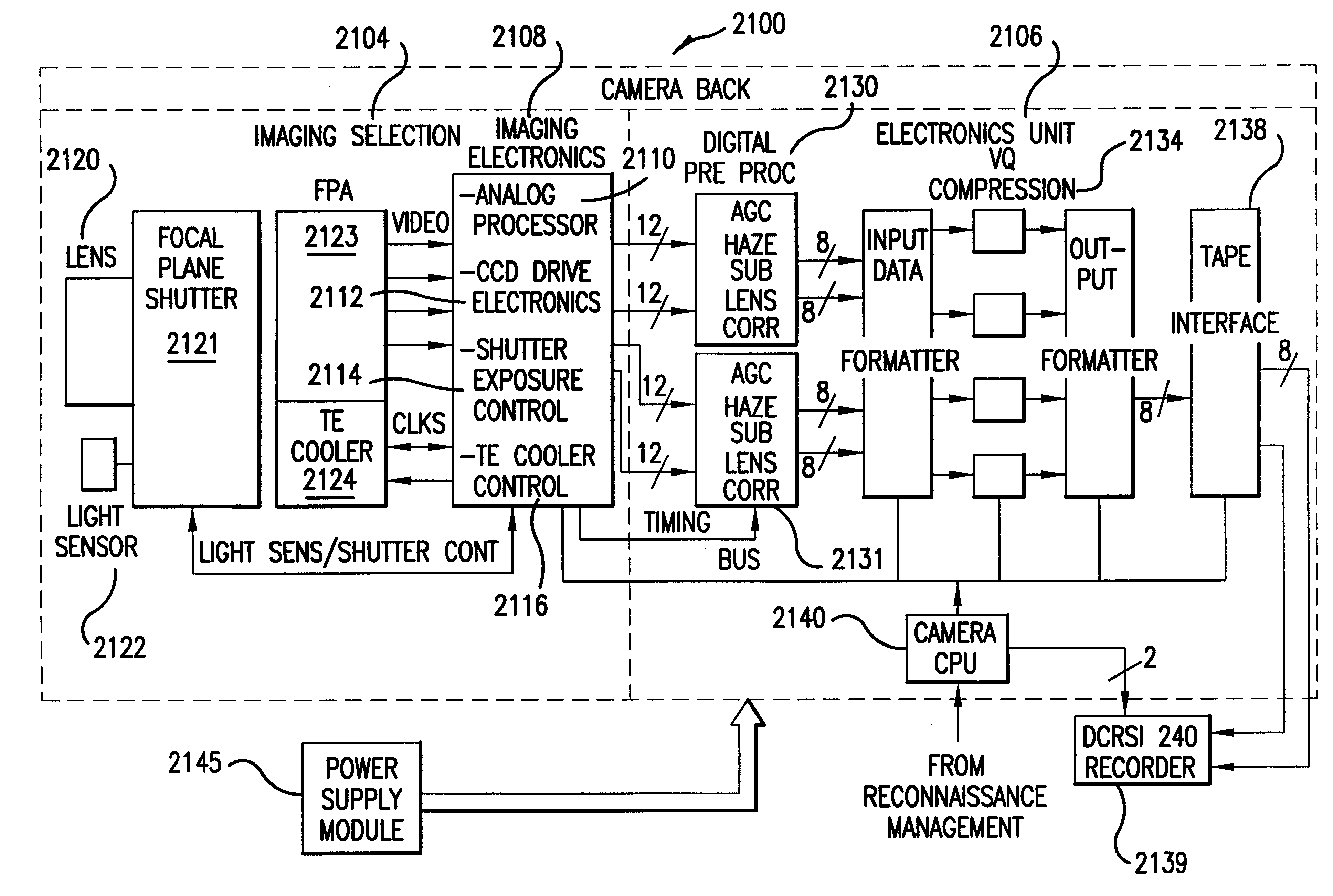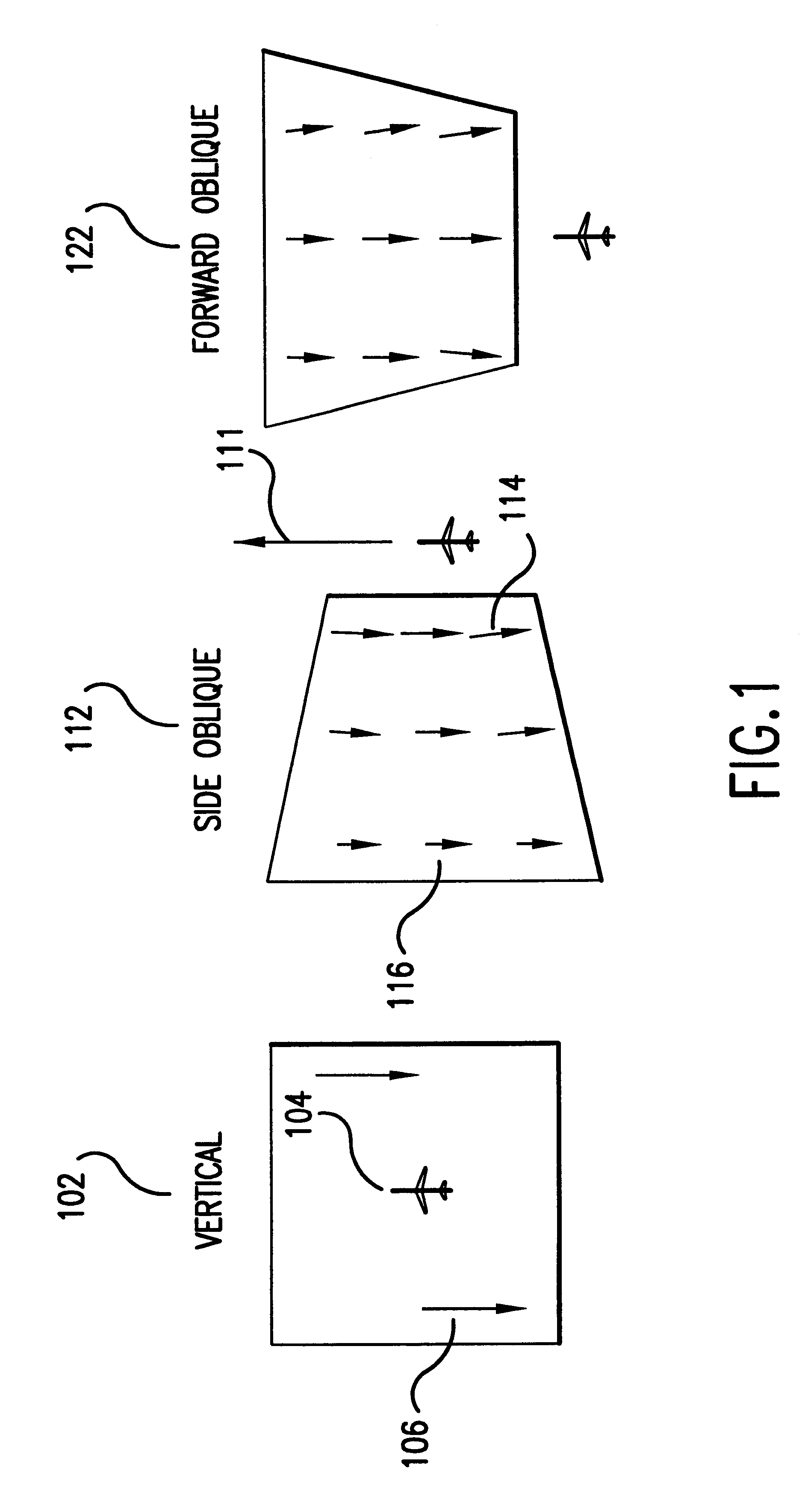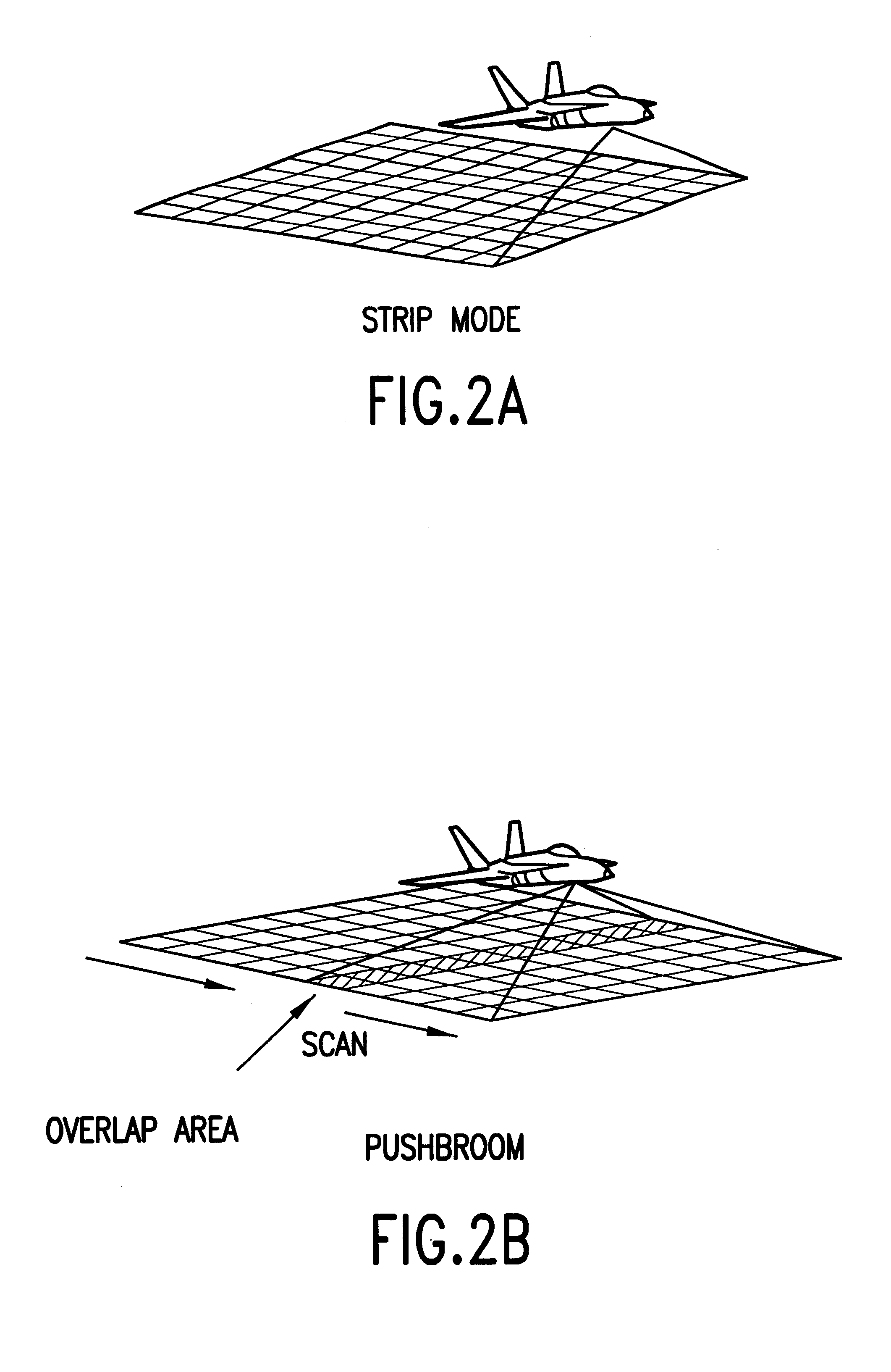Electro-optical reconnaissance system with forward motion compensation
a technology of forward motion compensation and optical reconnaissance system, which is applied in the field of optical reconnaissance system with forward motion compensation, can solve the problems of insufficient image motion compensation techniques to provide image motion compensation, limited frame size and resolution, and due to blurred images
- Summary
- Abstract
- Description
- Claims
- Application Information
AI Technical Summary
Problems solved by technology
Method used
Image
Examples
Embodiment Construction
The present invention can be incorporated in numerous different reconnaissance systems using current and yet-to-be-developed cameras, focal planes, and electronics systems adapted to provide a charge transfer rate that is uniform across the CCD and is time-varying in coordination with the focal plane shutter motion. The present invention is designed to utilize a variety of possible focal plane arrays, CCD imaging electronics, and system electronics to meet a specific set of desired performance specifications and parameters of the operating environment (e.g., ambient light conditions, aircraft velocity, altitude, distance to target, etc.). It will be apparent to one skilled in the art that alternative embodiments and structures may be utilized to meet these specifications and parameters. Additionally, these or alternative embodiments and / or structures may be utilized to meet alternative specifications and / or parameters.
a. Focal Plane Array
Although the invention can be utilized with n...
PUM
 Login to View More
Login to View More Abstract
Description
Claims
Application Information
 Login to View More
Login to View More - R&D
- Intellectual Property
- Life Sciences
- Materials
- Tech Scout
- Unparalleled Data Quality
- Higher Quality Content
- 60% Fewer Hallucinations
Browse by: Latest US Patents, China's latest patents, Technical Efficacy Thesaurus, Application Domain, Technology Topic, Popular Technical Reports.
© 2025 PatSnap. All rights reserved.Legal|Privacy policy|Modern Slavery Act Transparency Statement|Sitemap|About US| Contact US: help@patsnap.com



